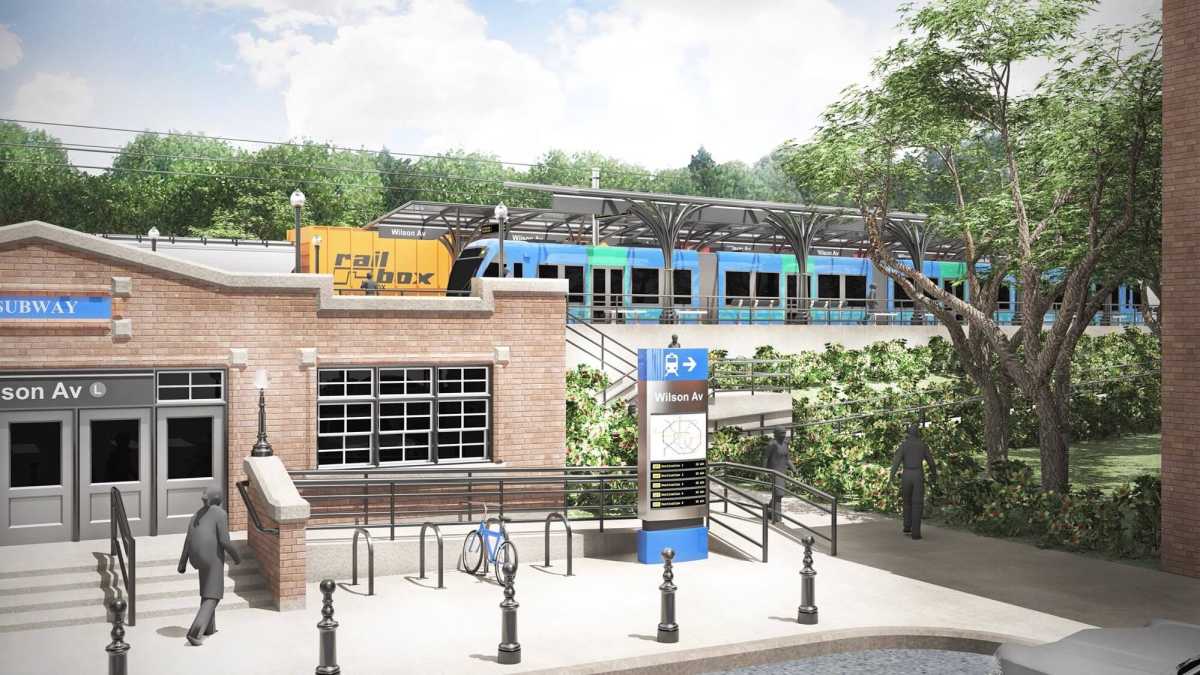Politics
New Light Rail Project Stirs Debate Over Neighborhood Change

Plans for the proposed Interborough Express (IBX), a new light rail line set to connect Queens and Brooklyn, have ignited a lively debate among New York City residents. According to data from the 2024 US Census Bureau, over half of the city’s population does not own a car, making enhanced public transportation vital for many. This $2.6 billion project aims to create 14 miles of swift train service, offering greater accessibility and potential economic growth for communities along its route.
On March 14, 2024, the Metropolitan Transportation Authority (MTA) held a public hearing in Middle Village, Queens, to gather feedback on the IBX project. While many residents welcome the new transit options, concerns were raised about the potential impact on neighborhood character and housing development. The meeting highlighted a divide: some see the IBX as a transformative opportunity, while others fear the consequences of rapid change.
Middle Village is currently served by just one subway station, while neighboring Maspeth lacks direct subway access. For residents without cars, bus routes are the only option to reach the subway. A new light rail line could significantly expand transit options, making travel across the city easier. However, some community members expressed worry that the IBX could lead to increased housing development, altering the predominantly residential nature of these neighborhoods.
In East New York, where the IBX would also travel, residents voiced similar concerns. Many fear that the introduction of the light rail system could accelerate gentrification, pushing long-time residents out due to rising rents. The balance between progress and preservation remains a contentious issue, with each community grappling with its own unique challenges.
Despite the valid concerns raised, the question remains whether New York City can afford to forgo the IBX for the sake of maintaining community character. Advocates argue that the benefits of the IBX outweigh the potential drawbacks, particularly for the majority of residents who rely on public transit. The city must find a way to move forward with the project while addressing the concerns of affected communities.
As conversations about the IBX continue, it’s essential for the city to engage with residents actively. By collaborating with local stakeholders, the city can manage the changes associated with the IBX, ensuring that community character is preserved and the risks of gentrification are mitigated.
The IBX represents not just a new transportation option, but a potential lifeline for those who depend on public transit to navigate New York City. Balancing progress with the needs of communities will be crucial as the city moves forward with this significant project.
-

 Science4 weeks ago
Science4 weeks agoIROS 2025 to Showcase Cutting-Edge Robotics Innovations in China
-

 Politics4 weeks ago
Politics4 weeks agoJudge Considers Dismissal of Chelsea Housing Case Citing AI Flaws
-

 Lifestyle4 weeks ago
Lifestyle4 weeks agoStone Island’s Logo Worn by Extremists Sparks Brand Dilemma
-

 World4 weeks ago
World4 weeks agoBravo Company Veterans Honored with Bronze Medals After 56 Years
-

 Health4 weeks ago
Health4 weeks agoStartup Liberate Bio Secures $31 Million for Next-Gen Therapies
-

 Lifestyle4 weeks ago
Lifestyle4 weeks agoMary Morgan Jackson Crowned Little Miss National Peanut Festival 2025
-

 Top Stories4 weeks ago
Top Stories4 weeks agoIndonesia Suspends 27,000 Bank Accounts in Online Gambling Crackdown
-

 Sports4 weeks ago
Sports4 weeks agoMel Kiper Jr. Reveals Top 25 Prospects for 2026 NFL Draft
-

 Science4 weeks ago
Science4 weeks agoArizona State University Transforms Programming Education Approach
-

 Top Stories3 weeks ago
Top Stories3 weeks agoUrgent Weather Update: Chicago Forecast for October 20 Revealed
-

 Health4 weeks ago
Health4 weeks agoTop Hyaluronic Acid Serums for Radiant Skin in 2025
-

 Sports4 weeks ago
Sports4 weeks agoYamamoto’s Mastery Leads Dodgers to 5-1 Victory in NLCS Game 2









